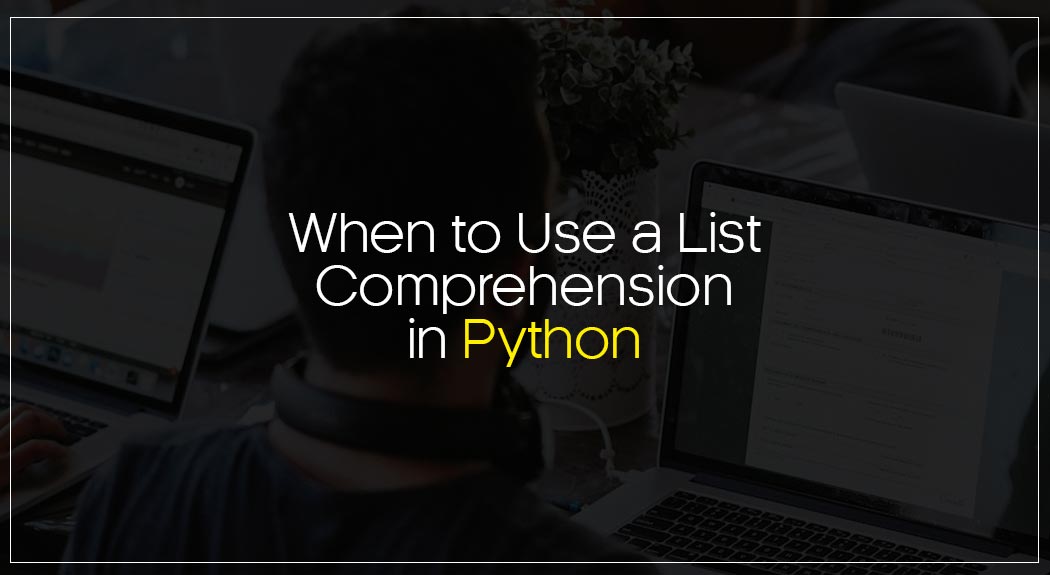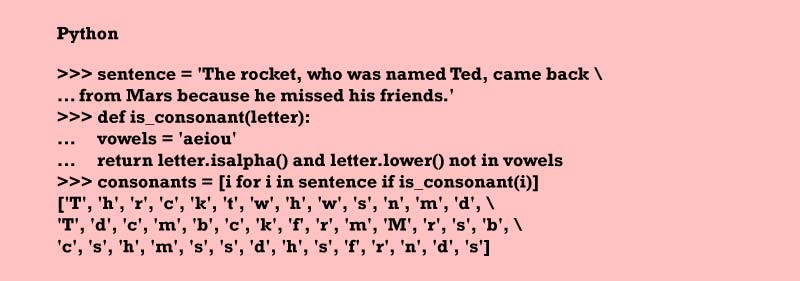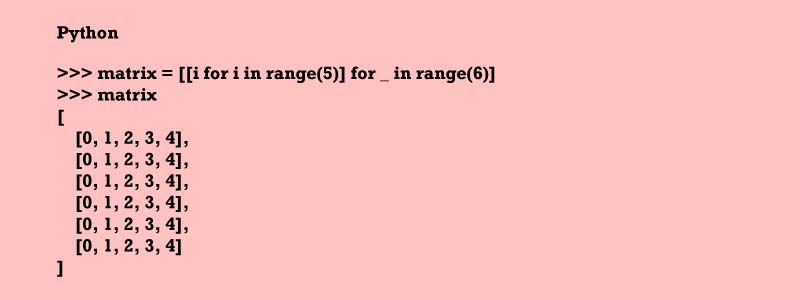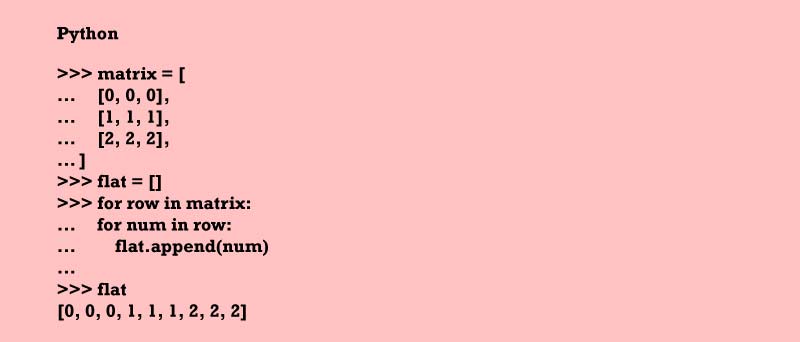
When to Use a List Comprehension in Python
If you are intended to learn the programming language, then Python would be the best choice to begin. Why because? It is the top programming language among programmers. Due to its flexibility and ease of understanding, it is popular in technological industries.
Before moving on to a deep understanding of python comprehension, we shall discuss the comprehension of Python and why Python is a demanding language among developers.
To have a comprehensive understanding of Python concepts, you can join Python Training in Chennai and impart the programming concepts like Syntax, Strings, Loop Statements, etc.
Why Python is a popular language
Among multiple programming languages like C C++, C#, R, Python has been named a top programming language. It is stated that there are more than 8 million python developers, and numerous applications are developed by python coding. Moreover, they are 10,000+ Job openings in top companies.
Individuals who have completed python coding language have multiple opportunities in top companies like Accenture, IBM, Cognizant, Tata Consultancy Services, Mindfire Solutions, Intel, etc. Further, various social media platforms like Reddit, Facebook, Pinterest, Spotify, YouTube, Pixar, Google, Instagram, and Netflix are written in Python.
Python is utilized in industries and enterprises that most of you are familiar with, ranging from machine learning to web development. It is a built-in high-level data structure, an object-oriented, high-level programming language used by software developers, scientists, computer engineers, researchers, students, and other IT professionals.
To understand how python is utilized for machine learning, you can join Machine Learning Course in Chennai to better understand machine learning techniques and python in machine learning.
Moreover, we have many job opportunities like Machine learning Engineer, Python game developer, Python web Developer, Database Engineer, Software engineer, etc.
We shall look at set comprehension python and the benefits of Using List Comprehensions.
List comprehensions
You can use list comprehension to develop complex functionality with just one line of code. On the other hand, many Python developers cannot utilize the more advanced aspects of list comprehension. On the other hand, Some programmers may overwhelm them, which would result in less efficient and difficult-to-read code.
By the end of this blog, you can understand:
-
Rewrite loops and map() calls
-
You can use comprehensions, loops, or map() calls.
-
Conditional logic will boost your understanding.
-
Modify the filter () with comprehensions
Lists in Python: How to Make Them
In Python, you may make lists in several different ways. Let's look at how to create lists with these methods first to understand better the trade-offs of utilizing list comprehension in Python.
Using for Loops
The for loop is the most popular sort of loop because it can be used to make a list of components in three steps:
These stages can be completed in three lines of code if you wish to construct a list of the first ten perfect squares:

Here, You create an empty list and squares. Moreover, you can use a for loop (10). Finally, add the result to the end of the list by multiplying each integer by itself.
Using map() Objects
map() is a functional programming-based alternative. map() creates an object from a function and an iterable. This object stores the results of performing the specified function on each iterable element.
Consider the following scenario: You need to calculate the price after tax for a list of transactions:

Here, there's an iterable txns and a method to get price with tax (); you call map() with both of these inputs and save the result in the final prices. Further, you can easily convert this map object into a list using a list ().
Using List Comprehensions
A third technique of generating lists is to use list comprehensions. You could rewrite the for loop from the previous example in just one line of code using this elegant approach:

Rather than starting with an empty list and adding each element at the end, use syntax to define the list and its contents all at once:

In Python, every list comprehension has three components:
A valid expression that returns a value is the member itself, a call to a method, or any other acceptable expression. The square of the member value is represented by the expression I * I in the example above.
The objector value in the list or iterable is called a member. The member value in the case above is i.
A list, set, sequence, generator, or any other object that may return its elements is known as an iterable. The iterable in the preceding example is range (10).
Because the expression constraint is so variable, list comprehension in Python can be used in situations where the map would otherwise be used (). The price example can be rewritten with its own list comprehension:

The only difference between this implementation and map() is that list comprehension returns a list rather than a map object in Python.
List Comprehensions Have a Lot of Advantages
Loops and maps() are typically described as more Pythonic than list comprehensions. But, rather than obtaining that assessment at face value, it's worthwhile to consider the advantages of utilizing a list comprehension in Python over the alternatives. You'll learn about a couple of cases where the alternatives are a better option.
Further, the single tools can be used in various situations; it is advantageous to utilize a list comprehension in Python. In addition, list creation can be used for mapping and filtering. In such a case, you need not use a distinct approach.
That is why list comprehensions are termed pythonic. Python promotes simple, powerful tools that may be applied to a wide range of circumstances. As an additional perk, you won't have to remember the appropriate order of parameters when using a list comprehension in Python, as you would when calling a map ().
List comprehension is declarative than loops because it is easy to read and comprehend. With the aid of loops, we can monitor how a list is created. Moreover, you need to manually make an empty list, loop over the elements, and need to add them at the end of the list. Instead, using a list comprehension in Python, you can concentrate on what you want to put in the list and allow Python to handle the list generation.
FITA Academy rated us the best Python Training in Chennai those interested in beginning their career in IT sectors equip themselves with the knowledge of python programming language.
How to Increase Your Comprehension Power
It is helpful to grasp the variety of functionality that list comprehensions can provide to appreciate their significance. You will also want to be aware of the changes coming in Python 3.8 to list comprehension.
Employing Conditional Logic

This formula is accurate; however, it's also inadequate. Optional conditionals are supported by a more detailed definition of the comprehension formula. Adding a conditional at the end of a list comprehension expression is the most popular technique to introduce conditional logic:

Conditionals are essential because they permit the list comprehension to screen out unwanted values with the aid of filter()

In the above code, the vowels are filtered out in the sentences. You can even relocate the conditional logic to a new function if you require a more detailed filter:

Here, you can build a complicated filter consonant(); you can add this function to your list as a conditional expression—the member value i sent to your function as an argument.
For easy filtering, you can put the conditional at the end of the statement, but what if you want to update a member value instead of filtering it out? It's best to put the conditional right at the start of the expression:

With the aid of this method, you can use conditional logic to choose from various possible output possibilities. For example: if you want to make changes in the list of prices, you can substitute a negative value with 0 and leave the positive value unchanged.

The above image states that Python outputs the value i if the number is positive.

_price() is now your conditional statement, and you can use it in your list comprehension expression.
Employing Set and Dictionary Comprehensions
The list comprehension is a standard tool in Python. Moreover, you can also create set comprehension, which is similar to list comprehension. The set comprehension ensures and brings out the output without no duplicates. Moreover, you can develop set comprehension with curly braces rather than brackets.

The set comprehension output is Vowles. Unlike lists, sets don't ensure that items are stored in order. This is why the first vowel in the quote iWhen to Use a List Comprehension in Pythons i, and the first member of the set is a.

Utilizing the Walrus Operator
Python 3.8 has introduced the walrus operator. Now, we shall discuss its process with examples.
The walrus operator solves the complex problem of deriving accurate data. By the following example, you can understand how to derive accurate data for the weather.

Although you won't need to utilise the assignment expression in a list comprehension very often, it's a handy tool.
When to Avoid Using Python's List Comprehension
List comprehensions are essential and can help you create simple, easy-to-read, and troubleshoot code, but they aren't the best solution in every situation. They may cause your code to function slower or consume more memory. Choosing an alternative is probably preferable if your code is less efficient, accurate, or hard to understand.
Nested Comprehensions
The comprehension can be created and set within the collection to create lists. For example, Weather Laboratory tracks weather conditions in six cities in the first week of July. In such a case, python list comprehension nested would help to store all weather data, which is dictionary comprehension.

A Python dictionary is a set of key-value pairs, with each key corresponding to a value. A text, list, or even another dictionary can be used as a value in a key-value pair. So, this code will process a list of data for each city in a short amount of time.
Nested lists are a standard method to create matrices. The matrices can be utilised for the mathematical purpose. Look at the example given below.

Inner list comprehension fills each of the six rows of outer list comprehension with values. Now, we shall consider the following scenario, in which a nested list comprehension is used to flatten a matrix:

If you intend to use for loops to flatten the identical matrix, then your code will be much more specific:

As you can see, the code explores the matrix one row at a time, extracting all of the elements in that row before proceeding on to the next. Now, we shall look at how to generate large datasets.
Choose Generators for Large Datasets
Python's list comprehension functions by loading the complete output list into storage. If you wish to sum the squares of the first one thousand integers, list comprehension shall solve a complex problem.

What if you needed to add the squares of the first billion integers? If you tried them on your computer, you might have noticed that it gets unresponsive. Python is attempting to generate a list containing one billion numbers, which will take up more memory than your computer can handle.
Whenever the size of a list becomes a constraint, using a generator rather than a list comprehension in Python is generally preferable. A generator returns an iterable rather than creating a single big data structure in memory.
If you use a generator to add the first billion squares, your software will probably run for quite a while, but it won't cause your machine to stop. A generator is used in the following example:


It's up to you whether you prefer the generator expression or map().
Profile to Optimize Performance
It's usually preferable to profile several ways and listen to the data if you're in a situation where performance is critical. timeit is a handy library for calculating how long portions of code take to execute. To compare the runtimes of map(), for loops, and list comprehensions, you can use timeit:

We shall describe three methods in this section, each taking a different approach to producing a list. Then you can instruct timeit that each of those routines should be executed 100 times. The total time it took to run those 100 executions is returned by timeit.
As demonstrated by the code, the most significant difference between the loop-based technique and map() is that the loop takes 50% longer to run. Whether or not this is significant depends on your application's requirements.
Now, you would have understood list comprehensions, set comprehension in Python, when to use list in Python, and use of list in Python. So, to acquire an in-depth understanding of Python, you can take up Python Training in Bangalore to have a comprehensive understanding of stings, python tools, libraries, arrays, etc.